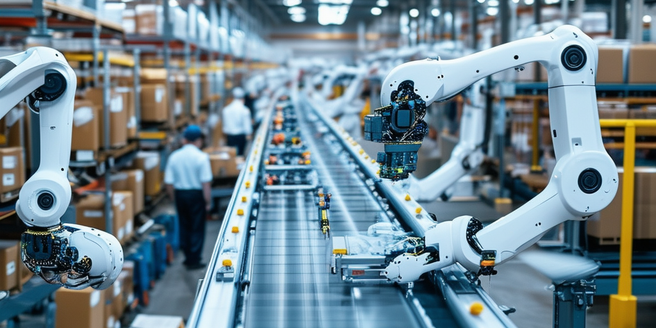
The Rise of Automation in the Modern Workplace
Automation has become a crucial element in transforming the modern workplace. Tasks that were once manual and time-consuming can now be performed quickly and efficiently with the help of technology. It has not only streamlined operations but also fostered innovation within organizations. This increased efficiency has led to significant cost savings for many companies. Additionally, it has facilitated smoother workflow integration across various departments, enabling teams to collaborate more effectively. This shift has allowed businesses to maximize productivity, reduce errors, and focus more on strategic initiatives. From robotic process automation (RPA) to AI-driven analytics, the landscape of work is evolving rapidly.
Key Benefits of Implementing Automation
Implementing automation in business operations offers numerous benefits. One of the primary advantages is cost savings, as automated systems reduce the need for manual labor, lowering payroll expenses and risks associated with human error. Automated systems can work around the clock without breaks, leading to higher productivity levels. Additionally, automation speeds up processes and minimizes human errors, allowing tasks that took hours to be completed in minutes, freeing up employees for more strategic activities.
Improved data accuracy and better compliance with regulations are other significant benefits, ensuring data is consistently and accurately recorded, critical for informed business decisions.
These factors collectively contribute to increased competitiveness and innovation. By streamlining operations and reducing operational costs, companies can allocate more resources to research and development, fostering an environment where innovation can thrive. Through strategic automation, businesses can achieve long-term growth, sustainability, and success.
Challenges and Risks of Business Automation
Despite its many advantages, automation also presents certain challenges and risks. One major concern is the potential for job displacement, as machines replace human roles. Another significant issue is the loss of human oversight in critical tasks, which can lead to errors and oversights that humans might have caught. For example, automated medical systems might miss subtle signs of a condition that a trained professional could recognize. There are also risks related to cybersecurity, as automated systems can be vulnerable to hacking. Moreover, the initial cost of implementing automation can be high, and the transition requires significant planning and change management.
Top Tools and Technologies for Automation
Numerous tools and technologies are available for businesses looking to implement automation. Robotic Process Automation (RPA) has become popular for handling repetitive tasks, allowing businesses to program software robots to perform routine tasks quickly and accurately, freeing up human workers for more complex activities. Machine learning and artificial intelligence are leveraged for data analysis and decision-making processes, enabling businesses to analyze vast amounts of data and generate insights that inform business strategy. Workflow management software and IoT devices are increasingly utilized to streamline operations and improve productivity. Workflow management software helps coordinate business processes efficiently by providing a structure for task allocation and progress tracking. IoT devices bring enhanced connectivity and data collection capability, contributing to a more integrated operational framework. By combining these tools, businesses can create comprehensive automation strategies that enhance efficiency and productivity across different areas of their operations.
Best Practices for Successful Automation Adoption
To ensure successful automation adoption, businesses should follow certain best practices. It is crucial to start with a clear strategy and identify processes that can benefit most from automation. Employee training and engagement are vital to smooth the transition. Moreover, it’s essential to keep all stakeholders informed and involved throughout the process. Additionally, setting realistic goals and timelines can help manage expectations and ensure steady progress. Furthermore, investing in the right technology can significantly impact the effectiveness of automation. Moreover, continuous monitoring and evaluation are necessary to measure the impact and make necessary adjustments. Collaboration across departments can also enhance the success of automation initiatives.
Future Trends and Predictions in Automation
The future of automation is marked by exciting trends and predictions. Integration of AI with automation will continue to evolve, providing more intelligent and adaptive systems. The rise of low-code platforms will make automation accessible to non-technical users. As more industries adopt these technologies, the landscape of business operations will be transformed significantly. Furthermore, the development of edge computing will enhance real-time data processing and decision-making. Additionally, we can expect an increase in the use of blockchain technology to secure automated processes. These advancements indicate a future where automation will be deeply ingrained in business operations.
